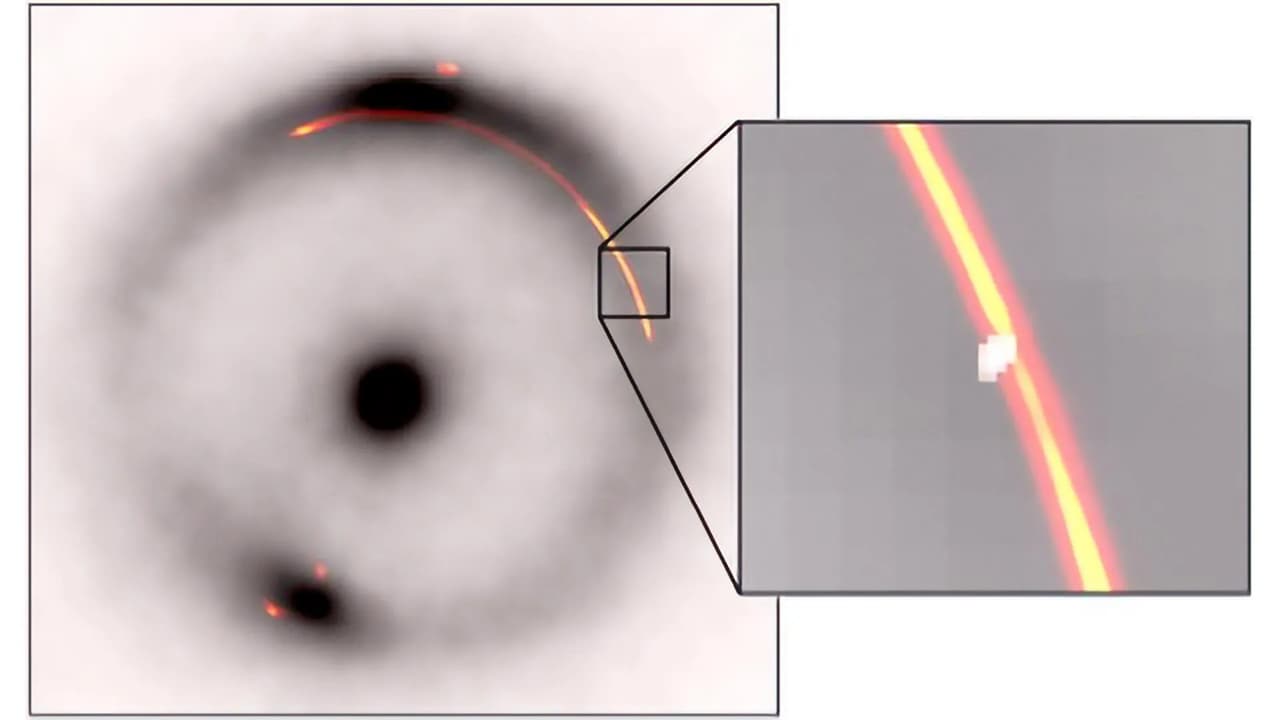Astronomers detect a million-sun-mass dark object in deep space using gravitational lensing. This hidden mass may be dark matter or a dormant dwarf galaxy, supporting cold dark matter models and helping explain the universe’s hidden structures.
Astronomers have discovered one of the smallest dark objects ever detected in the universe. Using a global array of radio telescopes, researchers observed how the invisible mass warped light from a more distant galaxy—a phenomenon known as gravitational lensing.
This mysterious object weighs roughly one million times the mass of the Sun and may be either a dense clump of dark matter or a dormant dwarf galaxy. Its discovery provides key insights into the hidden structures shaping our cosmos.
Detecting the Invisible Through Gravitational Lensing
Because the object emits no light or radiation, scientists relied on the gravitational pull it exerted on nearby light. The object’s presence appeared as a tiny “pinch” in the distorted image created by a larger gravitational lens, similar to a subtle flaw in a funhouse mirror.
“This is an impressive achievement,” says Chris Fassnacht, UC Davis physics professor. “Detecting such low-mass objects is critical for understanding the nature of dark matter.”
Global Telescope Array Enables Discovery
- To capture the faint signals, the team combined data from:
- Green Bank Telescope (GBT), West Virginia
- Very Long Baseline Array (VLBA), Hawai‘i
European Very Long Baseline Interferometric Network (EVN) linking radio telescopes across Europe, Asia, South Africa, and Puerto Rico
Together, these instruments functioned as an Earth-sized telescope, capable of detecting subtle distortions caused by the dark object’s gravity.
Implications for Dark Matter and Cosmology
This object, 100 times smaller than previously detected dark masses, supports the cold dark matter theory, which underpins current models of galaxy formation. By studying similar objects, scientists hope to confirm whether dark matter forms starless clumps or small, invisible galaxies.
Lead author Devon Powell of the Max Planck Institute for Astrophysics notes, “Finding this object is just the first step. The next challenge is discovering more and testing whether their numbers match theoretical predictions.”
Future Exploration
The team continues to analyze data and search for additional hidden objects. Understanding these faint masses will help astronomers map the universe’s unseen architecture and refine models of cosmic evolution.
The research appeared in Nature Astronomy and the Monthly Notices of the Royal Astronomical Society on October 9, 2025, and was supported by the European Research Council, Italian Ministry of Foreign Affairs, National Research Foundation of South Africa, and the U.S. National Science Foundation.
